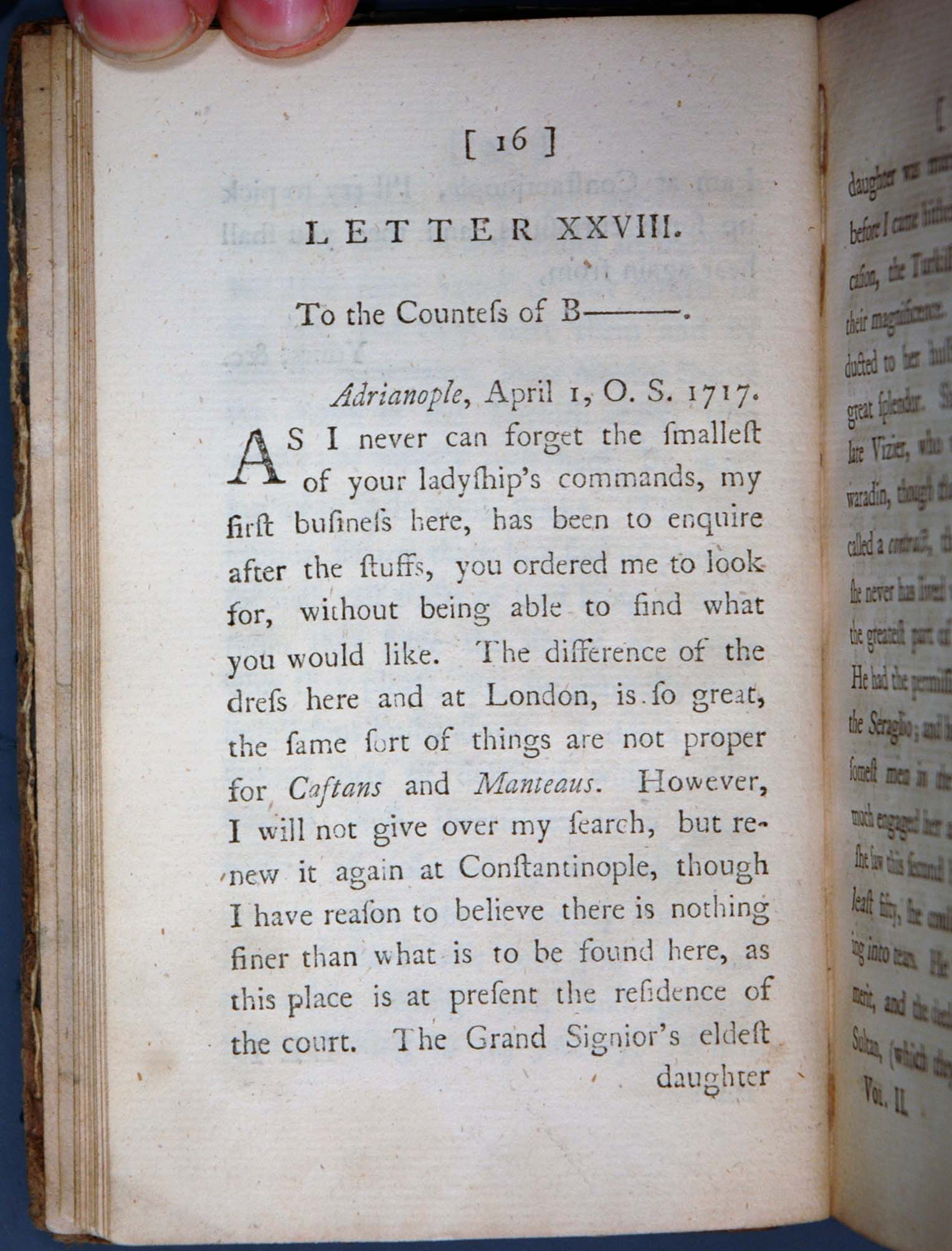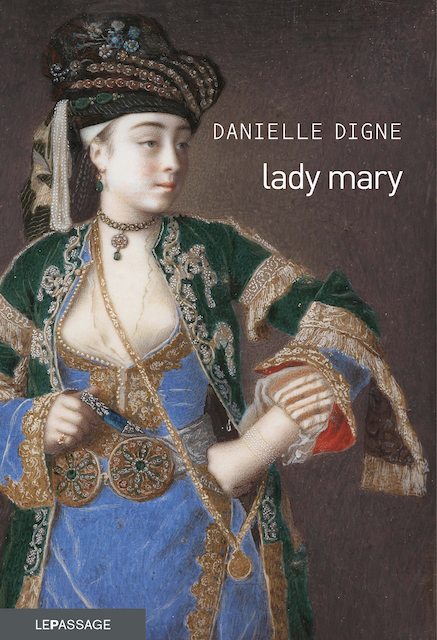

She also notes the unexpected freedom enjoyed by women and the spaces that they were afforded for socializing, conversation, and bonding that were not available to women back in England, though it bears noting that class isn’t often factored into Montagu’s own assessment of cultural norms, and these spaces-as well as greater freedom of mobility-were primarily available to upper-class women. Her letters are never entirely devoid of moments when the hegemonic gaze and European biases enter, though Montagu also reveals in her letters a keen interest in the Turkish language, cultural customs, respect for medical and technological innovations, and attempts to dismantle the widespread assumption that “these people are not so unpolished as we represent them,” as she states in letter 44 to the Abbé Conti. She inoculated her young son against smallpox according to the technique she observed during her travels and later advocated for the method once she returned to England, which was unfamiliar to Western medicine and therefore controversial at the time. Montagu traveled with her young son and later gave birth to her daughter while abroad. But there were also unconventional aspects to her journey and character.

What did it mean for Montagu to “strike out a new path,” not only in the travel writing genre, but also from her unique subject position? Montagu’s identity was a layered and complex one-though certainly a minoritized female voice in the overwhelmingly male travel writing genre, she also had unique privileges as a white British subject and wife of the British ambassador to Turkey, Edward Wortley Montagu, with whom she traveled from 1716-1718 as part of his position intended to keep trade running smoothly and foster a truce between warring nations, a goal that was ultimately unfulfilled. Montagu’s travel writings were groundbreaking not only because they were the first letters written by an English woman about her travels in the (then) Ottoman Empire, but also because- as Astell notes-travel writing at large was coded as a masculine genre dominated by male narratives.


I confess, I am malicious enough to desire, that the world should see, to how much better purpose the LADIES travel than their LORDS and that, whilst it is surfeited with Male- Travels, all in the same tone, and stuft with the same trifles a lady has the skill to strike out a new path, and to embellish a worn-out subject, with a variety of fresh and elegant entertainment. In 1724, Mary Astell wrote the following in what would later become the 1763 preface to Lady Mary Wortley Montagu’s The Turkish Embassy Letters: By Giorgina Samira Paiella Left: Original Title Page to Montagu’s Turkish Embassy Letters (Credit: UBC Rare Books and Special Collections) Right: Painting of Montagu and her son Edward by Jean-Baptiste van Mour.


 0 kommentar(er)
0 kommentar(er)
